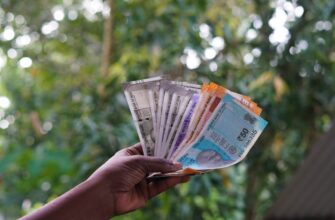What Is Bitcoin Halving?
Bitcoin halving is a pre-programmed event that reduces the reward miners receive for validating transactions on the Bitcoin blockchain by 50%. Occurring approximately every four years (or every 210,000 blocks), this mechanism ensures Bitcoin’s scarcity by slowing the creation of new coins. With a maximum supply capped at 21 million, halvings continue until the last Bitcoin is mined around 2140.
Key facts about Bitcoin halving:
– Block reward reduction: Miners’ rewards drop by 50% (e.g., from 6.25 BTC to 3.125 BTC in 2024).
– Fixed schedule: Occurs every 210,000 blocks (~4 years).
– Supply control: Limits inflation by slowing new Bitcoin creation.
How Does Bitcoin Halving Work?
Bitcoin halving is enforced by code within Bitcoin’s blockchain. Miners compete to solve complex puzzles to add blocks to the chain, earning rewards in return. When the network reaches 210,000 blocks, the protocol automatically cuts mining rewards in half. This process will repeat until all 21 million Bitcoins are mined.
The Halving Process Explained:
1. Miners validate transactions and secure the network.
2. After 210,000 blocks, the block reward is halved.
3. The new reward rate remains until the next halving.
4. This cycle continues until the 21 million supply cap is reached.
Historical Impact of Bitcoin Halving Events
Past halvings have significantly influenced Bitcoin’s price and market dynamics:
2012 Halving:
– Block reward: 50 BTC → 25 BTC
– Price surged from ~$12 to over $1,100 within a year.
2016 Halving:
– Block reward: 25 BTC → 12.5 BTC
– Price rose from ~$650 to nearly $20,000 by late 2017.
2020 Halving:
– Block reward: 12.5 BTC → 6.25 BTC
– Price climbed from ~$8,000 to an all-time high of $69,000 in 2021.
While these events correlate with bull markets, external factors like institutional adoption and macroeconomic trends also play a role.
Why Does Bitcoin Halving Matter?
1. Scarcity and Value:
Halvings enforce Bitcoin’s deflationary model, mimicking “digital gold.” Reduced supply growth often boosts demand.
2. Miner Economics:
Lower rewards pressure miners to upgrade equipment or exit, potentially centralizing mining power among efficient operators.
3. Market Sentiment:
Halvings generate hype, attracting investors anticipating price rallies.
2024 Bitcoin Halving: Predictions and Challenges
The next halving (April 2024) will slash rewards to 3.125 BTC. Experts predict potential price increases due to heightened scarcity, but challenges persist:
– Miner profitability: Rising energy costs may force smaller miners out.
– Regulatory scrutiny: Governments could impose stricter crypto regulations.
– Environmental concerns: Debates over Bitcoin’s energy use may intensify.
Bitcoin Halving FAQ
1. When is the next Bitcoin halving?
Expected in April 2024, reducing block rewards to 3.125 BTC.
2. Does halving guarantee a price increase?
Historically, prices rose post-halving, but past performance doesn’t ensure future results.
3. What happens when all 21 million Bitcoins are mined?
Miners will rely solely on transaction fees, which may rise to offset lost rewards.
4. Can the Bitcoin halving be stopped or changed?
No—it’s hard-coded into Bitcoin’s protocol. Altering it would require network-wide consensus.
5. How can investors prepare for a halving?
Diversify portfolios, research market trends, and avoid impulsive decisions based on hype.
Conclusion
Bitcoin halving is a cornerstone of its economic design, ensuring long-term scarcity and value. While past halvings have fueled bull runs, investors should weigh technical, economic, and regulatory factors when navigating this pivotal event.








